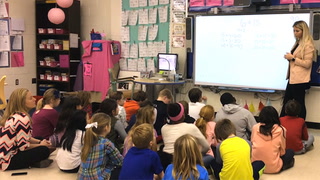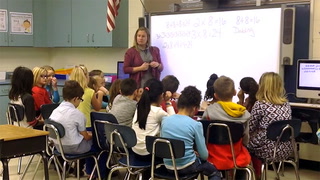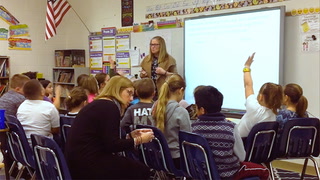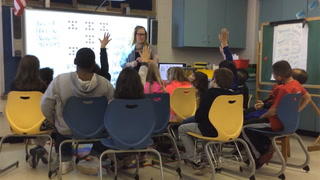Series Math Routines with Kristin Gray: Third Grade: Which One Doesn't Belong: Third Grade
Math.Practice.MP3
| Common core State Standards
- Math: Math
- Practice: Mathematical Practice Standards
-
MP3: Construct viable arguments and critique the reasoning of others.
Mathematically proficient students understand and use stated assumptions, definitions, and previously established results in constructing arguments. They make conjectures and build a logical progression of statements to explore the truth of their conjectures. They are able to analyze situations by breaking them into cases, and can recognize and use counterexamples. They justify their conclusions, communicate them to others, and respond to the arguments of others. They reason inductively about data, making plausible arguments that take into account the context from which the data arose. Mathematically proficient students are also able to compare the effectiveness of two plausible arguments, distinguish correct logic or reasoning from that which is flawed, and--if there is a flaw in an argument--explain what it is. Elementary students can construct arguments using concrete referents such as objects, drawings, diagrams, and actions. Such arguments can make sense and be correct, even though they are not generalized or made formal until later grades. Later, students learn to determine domains to which an argument applies. Students at all grades can listen or read the arguments of others, decide whether they make sense, and ask useful questions to clarify or improve the arguments.
Math.3.G.A.1
Common core State Standards
- Math: Math
- 3: Grade 3
- G: Geometry
- A: Reason with shapes and their attributes
-
1:
Understand that shapes in different categories (e.g., rhombuses, rectangles, and others) may share attributes (e.g., having four sides), and that the shared attributes can define a larger category (e.g., quadrilaterals). Recognize rhombuses, rectangles, and squares as examples of quadrilaterals, and draw examples of quadrilaterals that do not belong to any of these subcategories.
Save to My Resources
PLEASE CREATE A NEW ACCOUNT OR LOG IN TO ACCESS THIS CONTENT
Enjoy your first video for free. Subscribe for unlimited access.
Have questions about subscribing?
Click Here to learn more about individual subscriptions.
Click Here to learn more about School and Institution access.
A "Which One Doesn't Belong" routine encourages students to reason about the similarities and differences among a set of numbers, expressions, shapes or images.
Discussion and Supporting Materials
School Details
Shields (Richard A.) Elementary School910 Shields Avenue
Lewes DE 19958
Population: 560
Data Provided By:

Teachers
Kristin Gray
Math / Kindergarten 1 2 3 4 5 / Teacher
Newest
|
4 MIN
|
5 MIN
|
5 MIN
UNCUT CLASSROOMS
| TCHERS' VOICE
English Language Arts















10 Comments
Brianna Dusek May 17, 2020 1:14pm
Love how the teacher broke down the different properties and how receptive the students were so quickly. Seems like the students were really able to pick up on this and find the reasonings quickly. The material was concise and neatly presented. The students were engaged and eager to respond. There was such freedom to answer and a no judgment zone from the instructor and the other students.
Anita Varghese Aug 24, 2019 12:41pm
Hi Kristin, Amazing way to elicit from students different properties of geometric shapes. Loved the concept. This will enable my students to brainstorm and come up with different reasoning. I would like to know whether you start this routine before you start a new concept.Thank you
Anita Varghese Aug 24, 2019 1:17pm
Hi Kristin, Liked the way the class was conducted. I would like to incooperate this idea in my class. A good way to brainstorm on the similarities and properties of geometric shapes. Would have like to see how the class was concluded. Also wanted to know whether you introduce the math routine before starting on a new concept.
Dorothy Sharpe Dec 26, 2017 11:47am
Kristin Gray Jun 8, 2017 11:28am